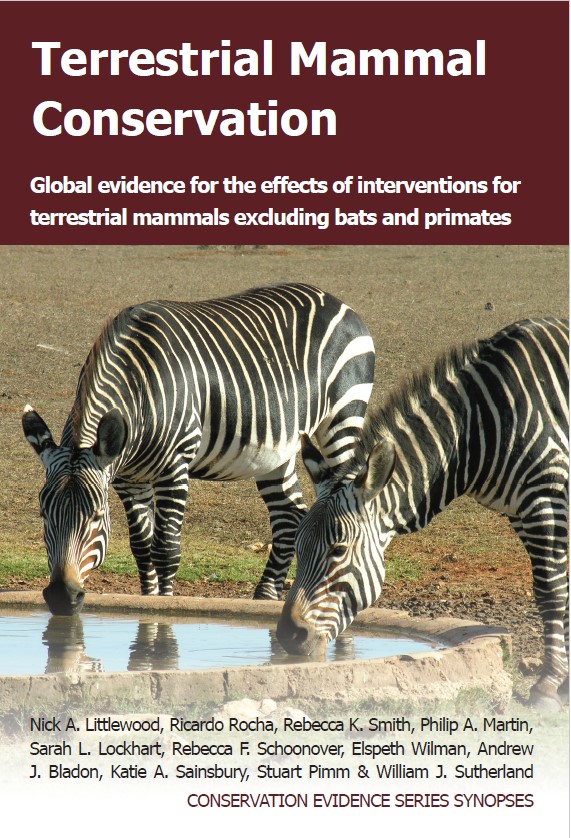Build fences around protected areas
-
Overall effectiveness category Unknown effectiveness (limited evidence)
-
Number of studies: 2
View assessment score
Hide assessment score
How is the evidence assessed?
-
Effectiveness
50% -
Certainty
23% -
Harms
20%
Study locations
Supporting evidence from individual studies
A before-and-after study in 1963–2011 at two montane forest and alpine grassland sites within a conservation area in central Kenya (Masey et al. 2014) found that after installing fencing around the protected area, mammal abundance and species richness increased initially but, at one site, abundance and richness subsequently declined. At both sites, following fence installation around the protected area, a declining trend in mammal abundance and species richness changed to an increasing trend (data reported as model results). However, at one of these sites, eight years after the fence was installed, abundance and species richness had again declined significantly, though there was no significant decline at the other site (data reported as model results). Nightly censuses of wildlife at watering holes and salt licks were carried out between approximately 15:00 h 08:00 h, at two lodges in Aberdare Conservation Area, in 1963–2011. In 1991, fencing was built around the 38 km perimeter of the park closest to the study sites and, by 2009, the entire conservation area was fenced.
Study and other actions testedA paired sites study in 2014 in a savanna reserve in Sofala, Mozambique (Correia et al. 2017) found that inside a fenced sanctuary there were more mammal scats than outside the sanctuary. More mammal scats were collected inside the fenced sanctuary (268 scats) than outside of it (207 scats). Scats were produced by 24 species, including nine antelope species, at least three carnivores, two primates, blue wildebeest Connochaetes taurinus, zebra Equus quagga, porcupine Hystrix africaeaustralis, scrub hare Lepus saxatilis, warthog Phacochoerus africanus, bushpig Potamochoerus larvatus and African buffalo Syncerus caffer. In June–August 2014, mammal scats were collected along ten 5 km × 5-m transects in Gorongosa National Park. Five transects, >1 km apart, were located inside a 62-km2 fenced wildlife sanctuary and five were located outside of it. The fence was constructed between August 2006 and September 2014. Scats were detected by two observers and the identity of species that produced the scat was determined by direct observation or based on the experience of the local rangers or field guides.
Study and other actions tested
Where has this evidence come from?
List of journals searched by synopsis
All the journals searched for all synopses
This Action forms part of the Action Synopsis:
Terrestrial Mammal Conservation
Terrestrial Mammal Conservation - Published 2020
Terrestrial Mammal Conservation





)_2023.JPG)














